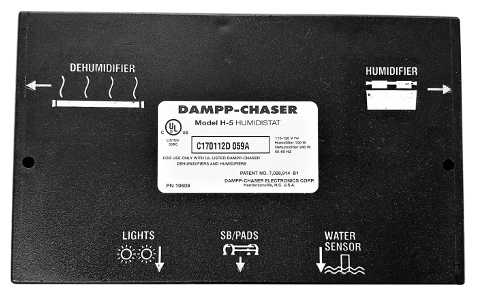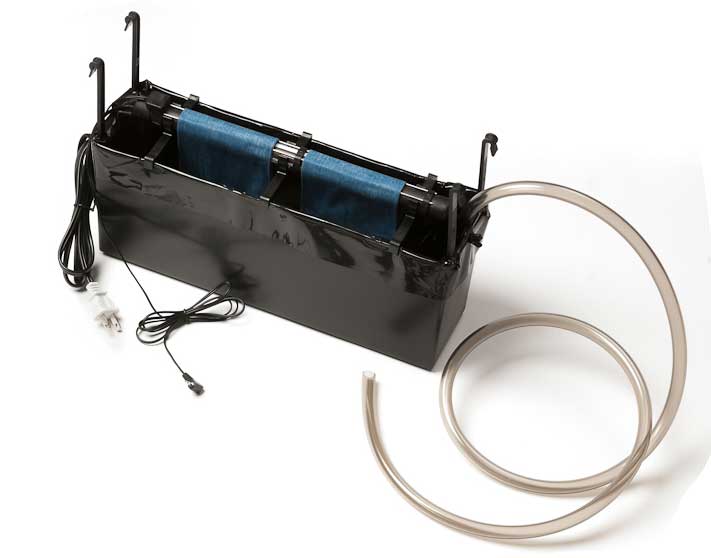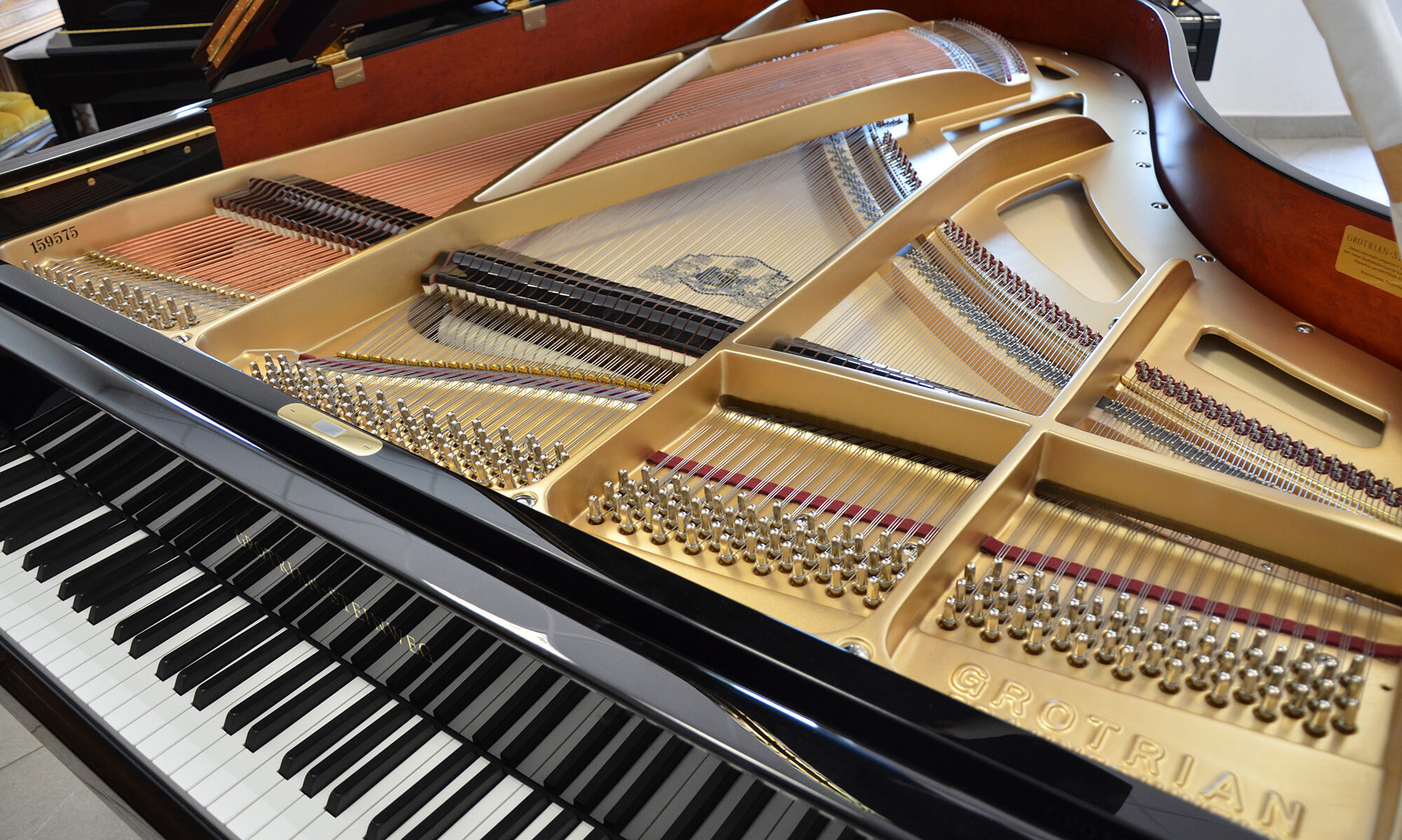The Constant Humidity Control and Regulation System for your piano.
What is relative humidity and how does it affect the piano?
The piano is affected by the environment where it is placed.
Wood is a material that moves in response to changes in relative humidity in the air. When the relative humidity in a room rises, water tends to move from the air itself to the wood and other absorbent materials in the room. When it drops, the water returns to the air.
Relative humidity changes continuously, at all times of the day and especially with the seasons. Consequently, the wood and felt parts of the piano constantly change as they absorb and release water.
Since relative humidity depends on temperature and the water content in the air, it is not possible to keep it constant by just controlling the temperature of the room. In fact, maintaining a stable temperature while the water content changes causes the relative humidity to change.
What happens in a piano due to the continuous fluctuation of relative humidity?
Keeping the humidity level around the piano as constant as possible will help it keep its tuning fork stable for longer, as well as slowing down side effects such as cracks in the soundboard, loose ankles, rust and problems with glue-ups. Furthermore, the piano mechanism itself, and therefore your playing, responds differently to dry or too humid air.
What can be done?
The first and simplest precaution is to keep the piano in a position away from areas where it is exposed to extreme temperatures and humidity, such as radiators or air fans, ovens, doors and windows. Direct sunlight, for example, is very harmful.
Checking the humidity in the house is also important to preserve the instrument.
The use of a humidifier during dry periods can help somewhat. However, too much water added to the room in winter can cause condensation on cold surfaces such as windows, possibly leading to mould, rust and in extreme cases damage to the structure of the house.
During the wet season, however, dehumidification is necessary. If the wet season is winter, keeping the house constantly and evenly heated can help, although it is difficult to control its stability. However, the summer wet season requires much more elaborate, difficult and expensive dehumidification.
Unfortunately, it is seldom possible to adequately control the relative humidity of a piano with room environment control alone.
A Piano Life Saver System from Dampp Chaser is the ideal solution for your humidity control problems.
The System consists of three parts.
The Humidistat control unit, with a relative humidity sensor. A humidifier and one or more dehumidifiers, depending on the size of your piano.

The Humidistat sensor is positioned less than two centimetres from the soundboard and detects if the wood is dry. In this case it activates the action of the humidistat, which slowly and safely evaporates water around the soundboard.

Conversely, when the Humidistat sensor senses the presence of sufficient moisture in the wood, it activates the action of the dehumidifier.

The dehumidifier, a silent and invisible bar, then carries away moisture by using air currents until the sensor senses that the board is dry. The system then still operates the humidifying function. The cycle is thus constant, 24 hours a day and continues day after day, year after year, protecting your floor from external conditions.
Is it expensive to buy and maintain a Life Saver Piano System?
The initial cost of a portable dehumidifier and humidifier is about the same as a Piano Life Saver System installed in the piano.
However, you pay much more to keep these systems operational continuously and they require much more elaborate management.
With the use of a portable dehumidifier and humidifier, one needs to monitor the environment daily with a hygrometer to be sure that the humidity remains within a safe range for the piano. A Piano Life Saver System on the other hand automatically keeps the piano’s humidity under control constantly, day after day, year after year.
A portable dehumidifier and humidifier continuously require you to empty (or fill) a large water tank every day. In contrast, the small Piano life Saver humidifier only requires a tank of water twice a month, in most environments.
Portable dehumidifiers and humidifiers are intrusive, noisy devices, whereas Piano life Saver is hidden inside the piano (upright) or under the piano (tail) and works silently.
And the costs?
The electricity costs to operate a portable dehumidifier continuously, 24 hours a day all year round, are at least 11 times the cost to operate a Piano Life Saver system all day long.
Models and features
The Piano Life Saver Systems are available in 4 models: for upright piano; for grand piano up to cm 172; for grand piano from cm 172 to cm 225; for grand piano over cm 225. The longer the piano, the more dehumidifiers and humidifiers are required to cover the entire extension of the soundboard.
Maintenance accessories
Some accessories are available for proper maintenance, such as replacement pads for the humidifier water reservoir, which should be changed twice a year. It is also important to add a specific Dampp Chaser additive to the water to prevent stagnation causing the proliferation of mould or algae. Every time water is added to the water, about twice a month, half a scoop of additive is added. A panel with LEDs indicates water shortage or a problem with the buffers and the actual presence of current in the system.


